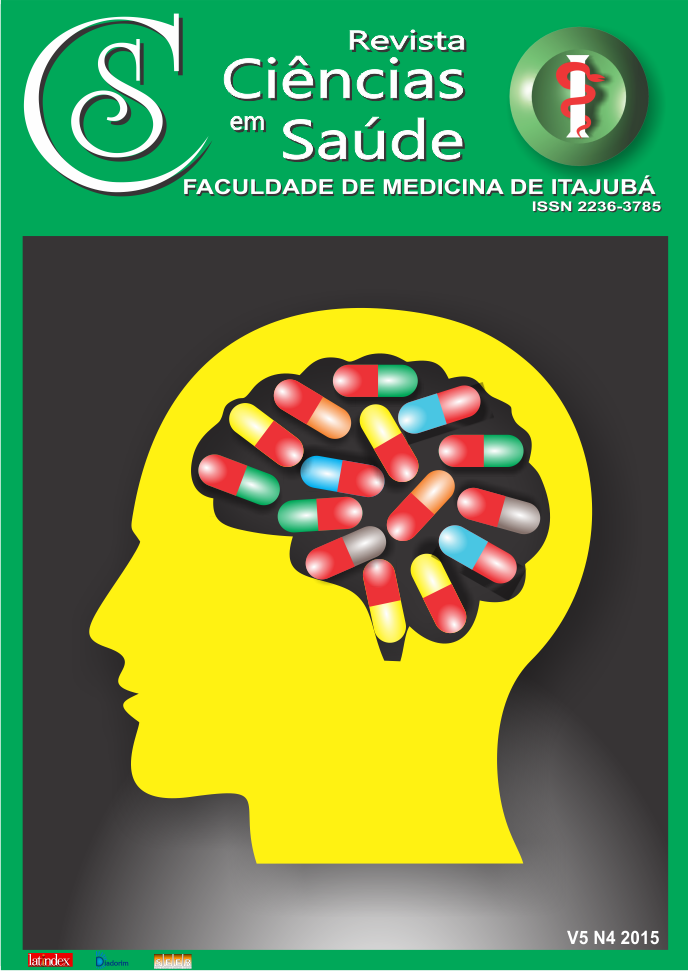Alergia à Proteína do Leite de Vaca Persistente em Adulto: Relato de Caso / Persistent Cow’s Milk Allergy in Adult: Case Report
Main Article Content
Abstract
RESUMO
Introdução: Alergia à Proteína do Leite de Vaca (APLV) é uma doença inflamatória secundária à reação imunológica contra uma ou mais proteínas do leite de vaca (LV) que afeta principalmente a faixa pediátrica. A real prevalência é discutida em muitos estudos. As manifestações clínicas dependem do tipo da resposta imunológica, ser IgE mediada ou não. Os sintomas se iniciam por volta dos 06 meses de vida e na maioria dos casos, esse processo alérgico regride, com o paciente desenvolvendo tolerância até a adolescência. Casuística: Relata-se um caso de um paciente do sexo masculino, apresentando desde os 6 meses de idade de anafilaxia e broncoespasmo. Nesta época foi levado em hospitais e ambulatórios sendo diagnosticado e tratado como asma apenas, porém sem sucesso. Aos 18 anos, em consulta com especialista foi diagnosticado com APLV, apesar da dieta de exclusão, apresentou diversas reações anafiláticas, devido a ingestão acidental do alérgeno. Discussão: O paciente iniciou os primeiros sintomas quando houve contato com LV e apresentou teste laboratorial com valores compatíveis a patologia. Segundo a literatura a prevalência de APLV cai para menos de 1% aos 6 anos de vida e está persistência pode estar associada a múltiplos fatores, no caso relatado, o paciente não apresentou tolerância até o presente momento. Conclusão: APLV é uma doença usualmente de criança em que, se estas não adquirirem tolerância, complicações podem perdurar indefinidamente. O Diagnóstico precoce e o manejo adequado desta condição, revela grande importância na qualidade de vida e na prevenção de anafilaxia.
Palavras chave: Alergia, Proteína do leite de vaca, Anafilaxia.
ABSTRACT
Introduction: Allergy to cow's milk (CMPA) is an inflammatory disease Introduction: Allergy to cow's milk (CMPA) is an inflammatory disease secondary to immune response against one or more cow's milk proteins (LV) which primarily affects pediatric patients. The current prevalence is discussed in many studies. The clinical manifestations depend on the type of immune response, being IgE mediated or not. Symptoms start at about 06 months of life and in most cases, the allergic process subsides, and the patient develops tolerance through adolescence. Case Report: We report the case of a male patient, who was presenting, since his 06 months of age, anaphylaxis and bronchospasm. At that time he was taken into hospitals and clinics being diagnosed and treated as asthma, but without success. At 18, in consultation with expert was diagnosed with CMPA, and despite the exclusion diet, presented several anaphylactic reactions due to accidental ingestion of the allergen. Discussion: The patient began the first symptoms when there was contact with LV and presented laboratory test values compatible with the pathology. According to the literature the prevalence of CMPA drops to less than 1% to 6 years of life and this persistence can be associated with multiple factors, in our case, the patient did not develop tolerance to date. Conclusion: CMPA is usually a child disease but ,if they do not acquire tolerance, complications can last indefinitely. Early diagnosis and appropriate management of this condition, reveals a great deal on quality of life and prevention of anaphylaxis.
Keywords: Allergy, Cow’s milk protein, Anaphylaxis.
Article Details
Authors maintain copyright and grant the HSJ the right to first publication. From 2024, the publications wiil be licensed under Attribution 4.0 International 
 , allowing their sharing, recognizing the authorship and initial publication in this journal.
, allowing their sharing, recognizing the authorship and initial publication in this journal.
Authors are authorized to assume additional contracts separately for the non-exclusive distribution of the version of the work published in this journal (e.g., publishing in an institutional repository or as a book chapter), with acknowledgment of authorship and initial publication in this journal.
Authors are encouraged to publish and distribute their work online (e.g., in institutional repositories or on their personal page) at any point after the editorial process.
Also, the AUTHOR is informed and consents that the HSJ can incorporate his article into existing or future scientific databases and indexers, under the conditions defined by the latter at all times, which will involve, at least, the possibility that the holders of these databases can perform the following actions on the article.
